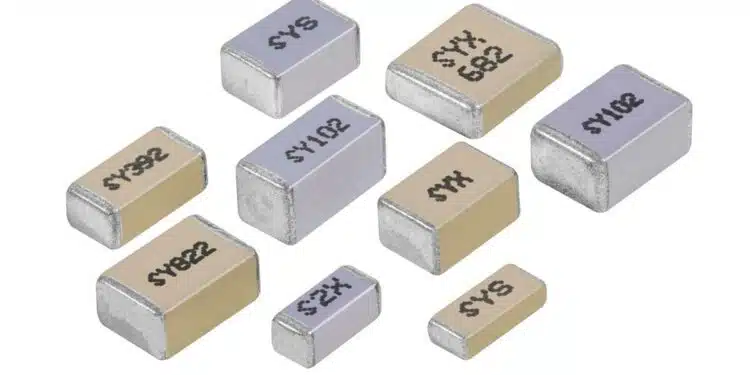Knowles Corporation presents new range of X1/Y2 safety-certified multilayer ceramic capacitors that offers more options for electrical engineers designing high-power, compact power electronics.
Knowles Corporation, a leading manufacturer of specialty electronic components, announced the release of a new range of X1/Y2 safety-certified surface-mount multilayer ceramic capacitors (MLCCs).
Driven by growing demand for miniaturized surface-mount components capable of performing reliably at ever-increasing working and testing voltages, these new safety-certified capacitors have a voltage rating between 310Vrms and 500Vrms, including the first class Y2 MLCC on the market to have a voltage rating as high as 500Vrms (Table below).
As a result, these MLCCs are an ideal solution for ensuring safe operation of the high-power AC/DC converters required for a variety of industrial and automotive applications.
| Y2/XI | 2720 | |
| Min | Max | |
| 310/310 | 5.6nF | 12nF |
| 440/440 | 3.9nF | 4.7nF |
| 500/500 | 1nF | 3.3nF |
Key features of this new range of safety-certified MLCCs include the following:
- High working voltage – Voltage rating and maximum capacitance value of 12nF in 310Vac class Y2
- Critical safety features in a compact case – An innovative design offers creepage distance of up to 5 mm minimum packed into a 2720 case size, reducing required board space
- Higher DC-rated voltage – 1,500V in compliance with EN60384-14 Annex H
- Tested for operation in harsh environments: Rated to humidity grade IIIB (85°C/85%RH,1000hr)
- Wide operating range – -55C to 125C
These safety-certified MLCCs are available AEC-Q200 qualified and with a flexible termination option using FlexiCap™, our proprietary flexible epoxy polymer termination material.
“With our newly expanded portfolio of enhanced safety-certified MLCCs, electrical engineers designing the high-voltage power electronics required for applications ranging from electric vehicle onboard chargers to datacenter servers can reliably mitigate the effects of transient voltages and electromagnetic interference, ensuring safe operation,” said Nan Zhang, Director and Product Line Manager for Ceramic Capacitors at Knowles.































